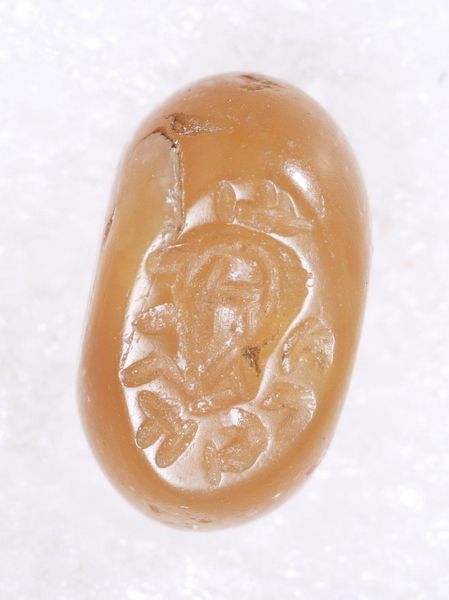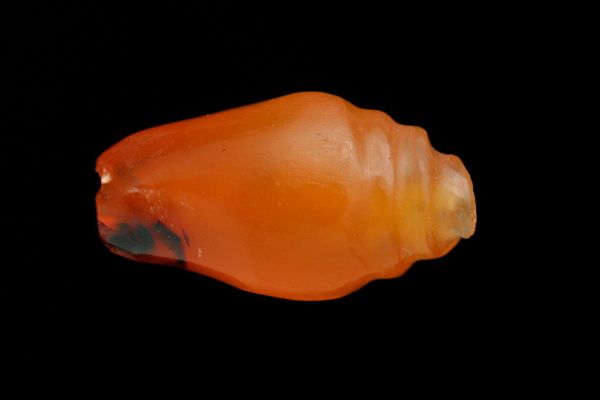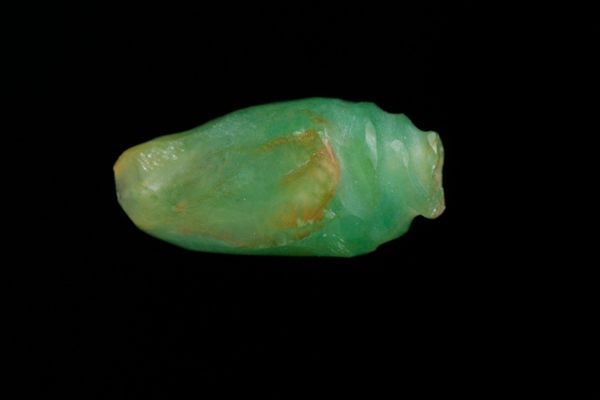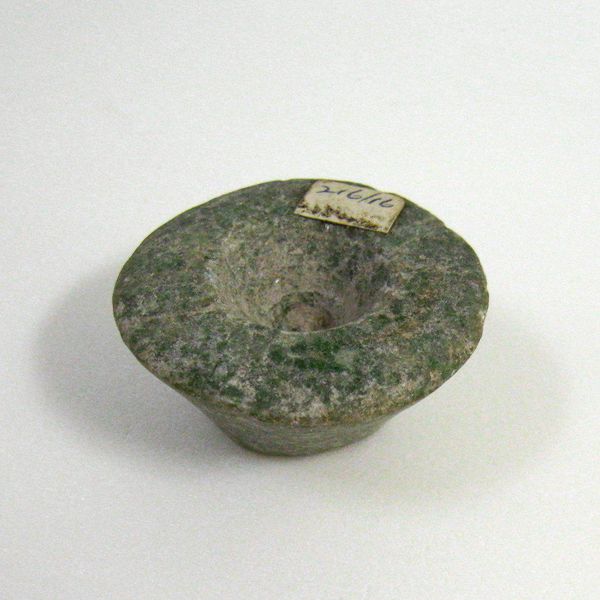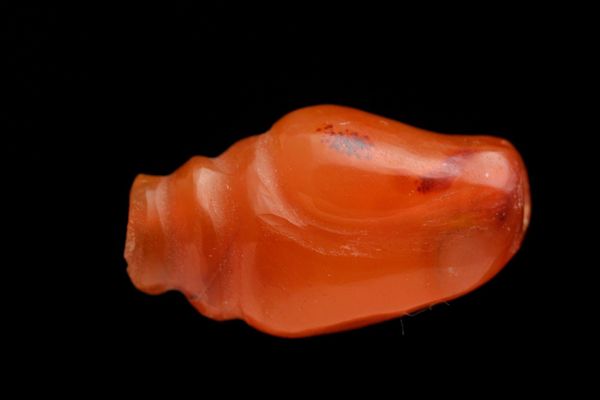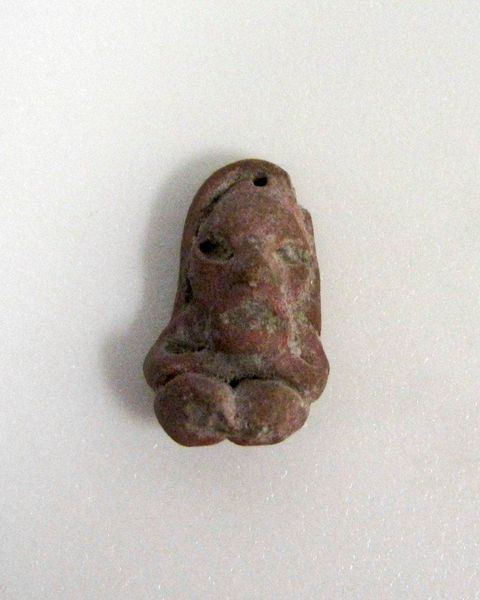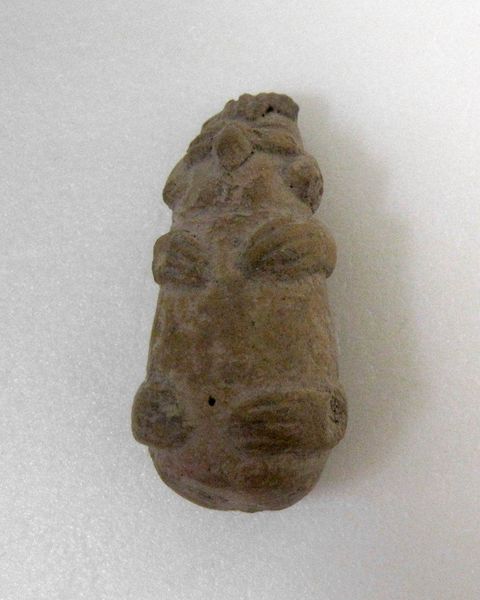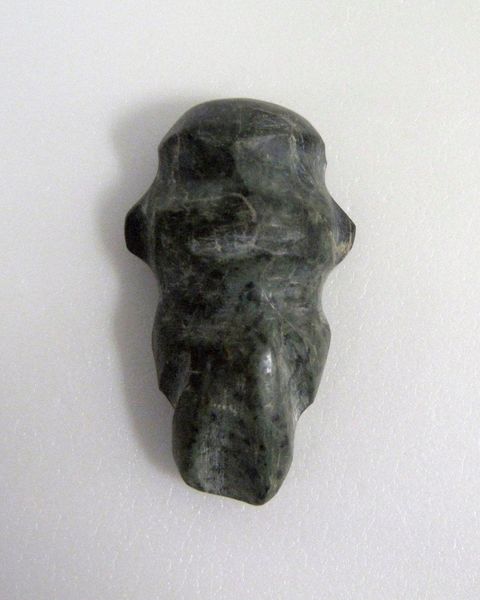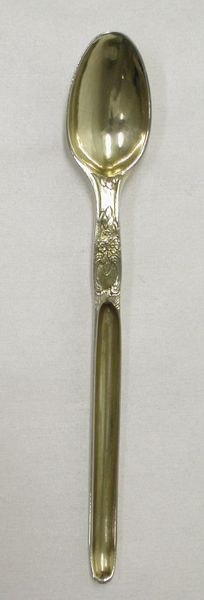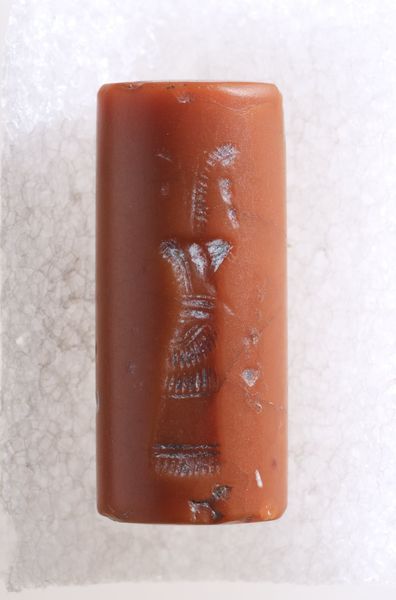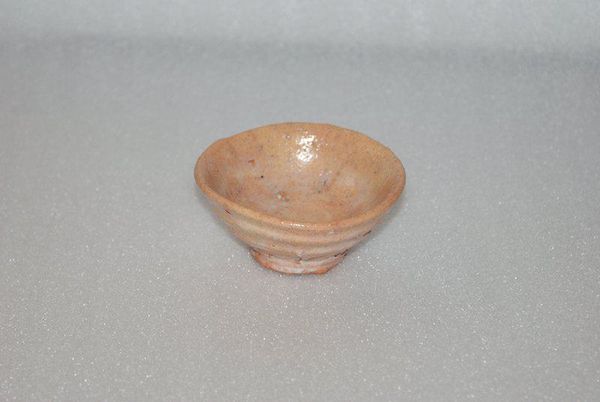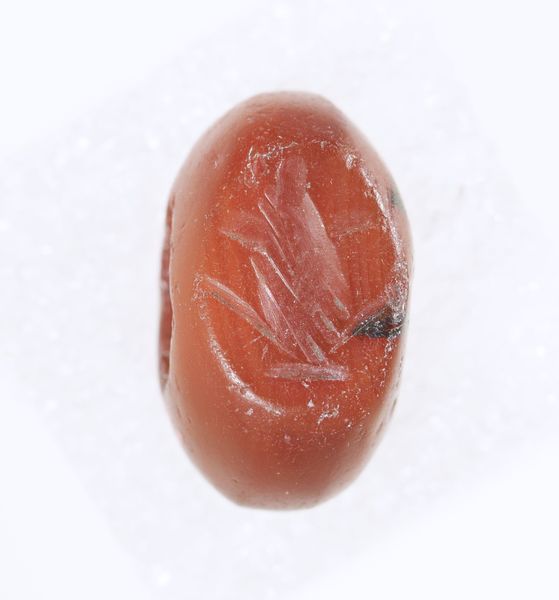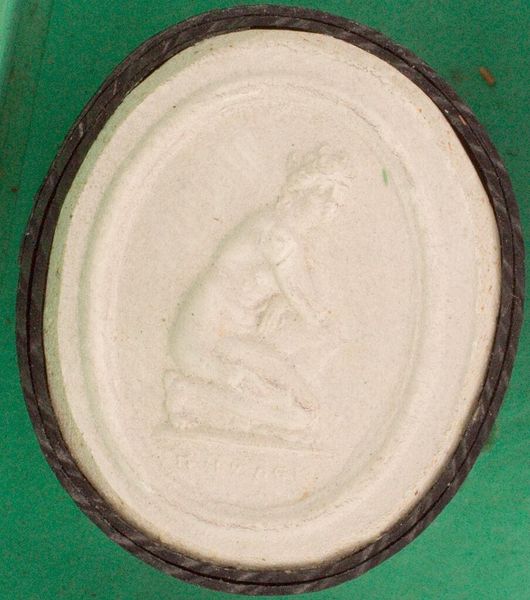
carving, glass, sculpture
#
carving
#
greek-and-roman-art
#
glass
#
ancient-mediterranean
#
sculpture
#
decorative-art
Dimensions: Overall (confirmed): 1 3/16 x 11/16 in. (3 x 1.7 cm); 30.1 x 16.9 x 3.8 mm
Copyright: Public Domain
Curator: This striking piece is titled "Bacchus," believed to have been crafted sometime between 1800 and 1815. It is part of the Metropolitan Museum of Art's collection here in New York. Editor: There's a subtle heat to it, isn't there? A visual intensity, especially with the carnelian glass seeming to glow from within. The size suggests intimacy; you would hold this gem, not stand back and admire it. Curator: The choice of glass, deeply hued, wasn't accidental. During this period, there was renewed interest in classical antiquity. Pieces like this revived the aesthetics and symbolic systems of the Greeks and Romans for a modern audience. Bacchus, the god of wine, ritual madness, fertility, theatre, and religious ecstasy was a particularly appealing subject. Editor: And a figure rife with symbolism. Grapes abound – suggesting the harvest and, of course, wine. Bacchus is surrounded by symbols of fertility and abundance, of blurring the lines between the rational and the ecstatic. It's like holding concentrated Dionysian energy. Curator: Indeed. Though carved much later, this object reveals a political aspect. In revolutionary France, and later in Napoleonic Europe, artists often looked to antiquity to validate the new order and the concept of Republicanism itself. Greco-Roman imagery had incredible persuasive power. Editor: It is curious, the way certain symbols maintain their force through vast stretches of time. Bacchus still whispers of abandoning control. But who originally possessed such a gem, and for what purpose? Was it a personal talisman, a political statement, or simply an objet d'art intended to evoke a sense of cultured refinement? Curator: The answer to your question may be many answers woven into a complex history that shaped our world and the images within it. Its survival alone gives "Bacchus" a continued relevance and cultural force. Editor: Yes, something potent about the cyclical nature of symbolism. Today we see Bacchus and glimpse the ghost of ancient rituals, the fervor of revolutionary ideals... Curator: …and we are left considering our own world. Thank you for illuminating the many facets of Bacchus, reminding us that a seemingly small artwork holds a complex world.
Comments
No comments
Be the first to comment and join the conversation on the ultimate creative platform.
